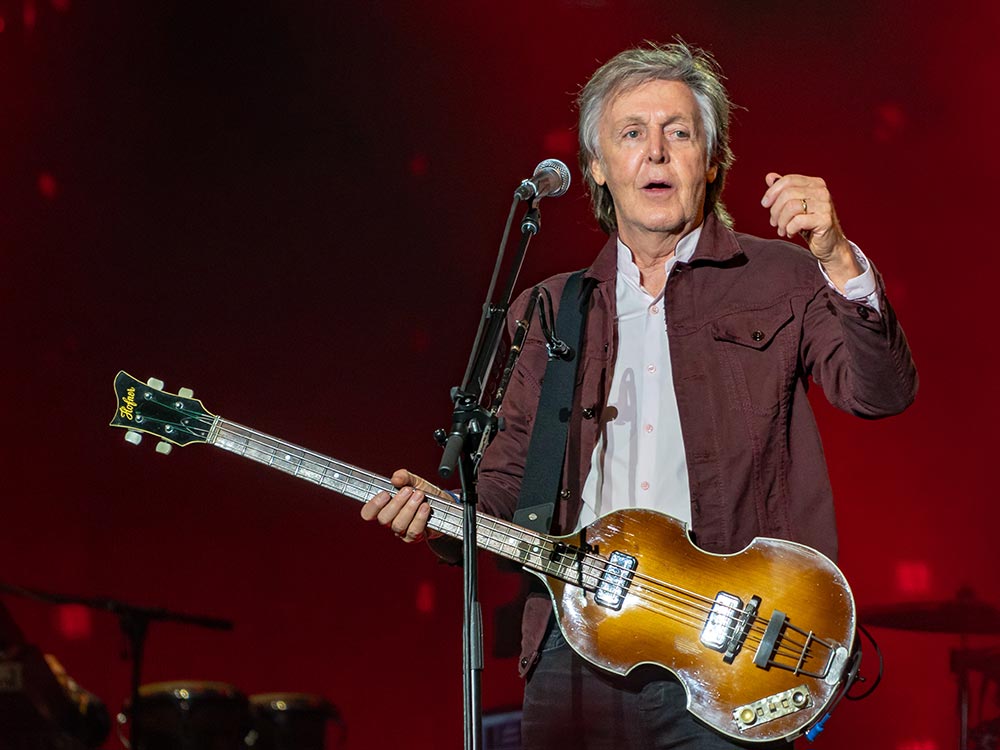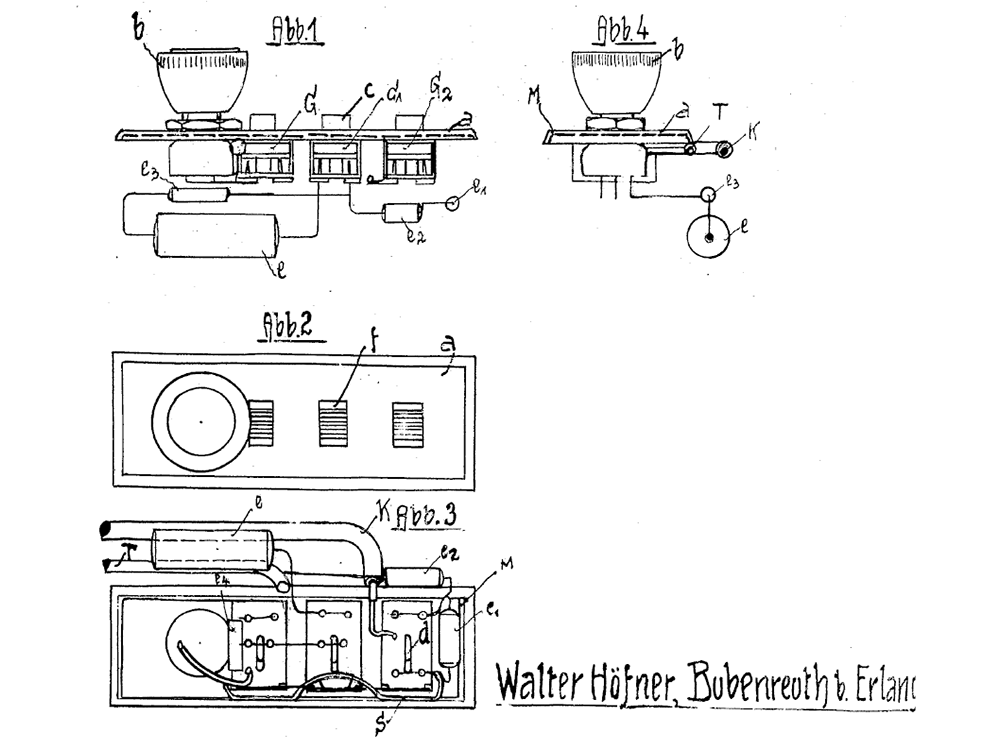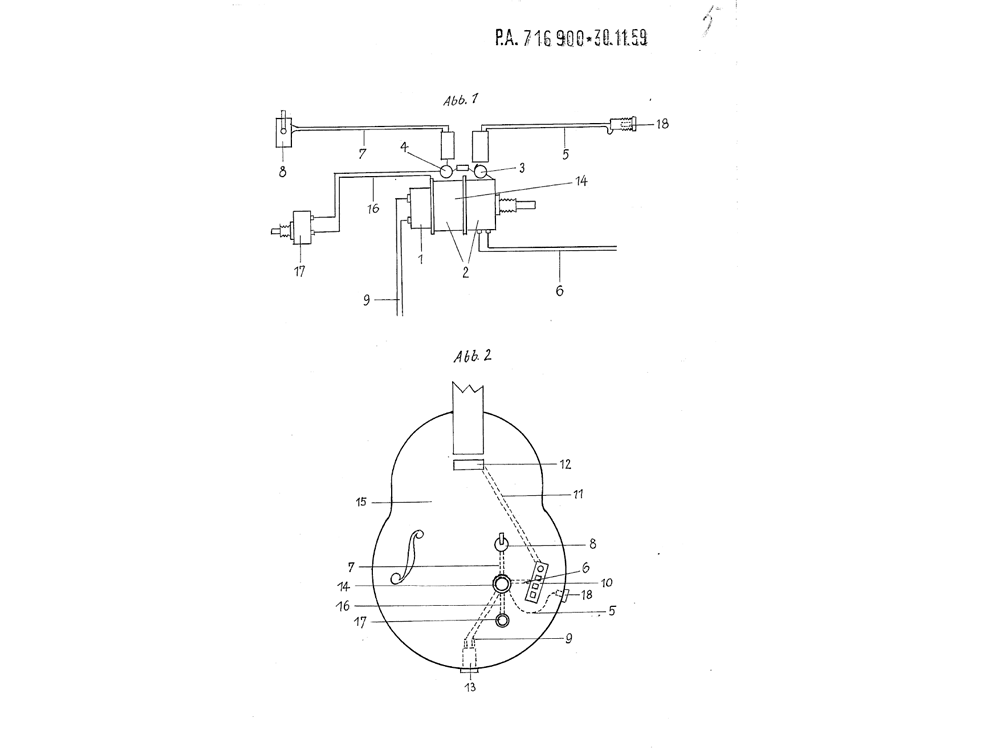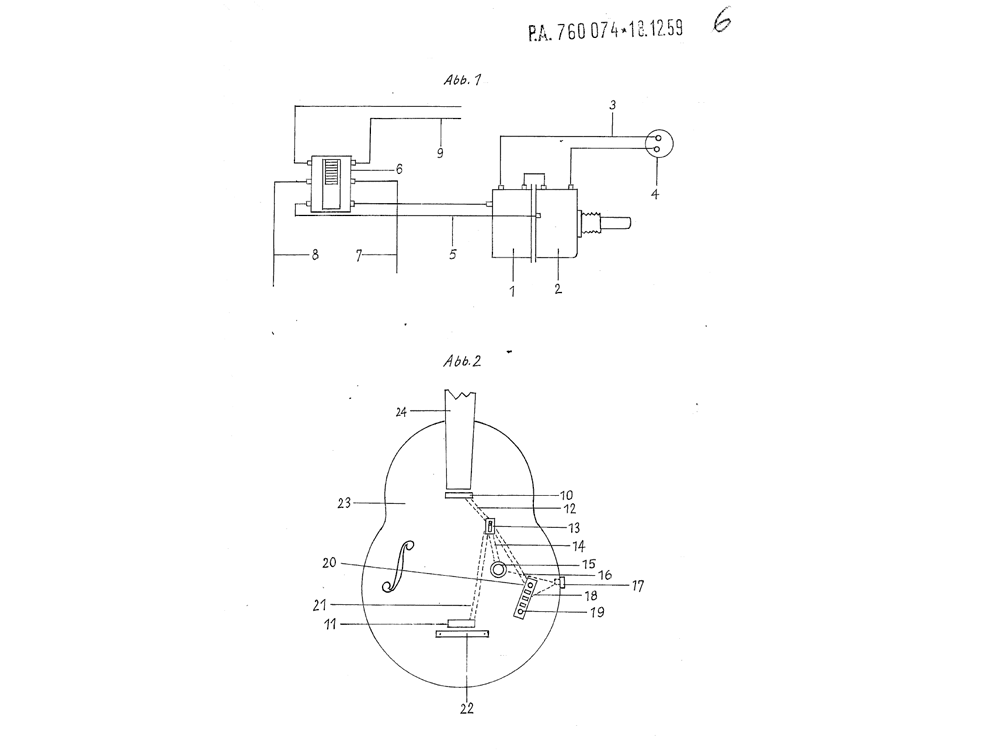In 2022, the decline in utility model applications in the past years, which was interrupted as a result of a significant increase in the technology field “Other Consumer goods” (community masks, respirator masks, etc.) in the pandemic year 2020, continued. Only in the technology field “Electrical engineering”, there was an increase in applications compared to the previous year, whereas there was a decline in utility model applications in all other sectors. 73.4% of the utility model applications were filed via the electronic services of the DPMA, an increase of 8.5 percentage points compared to the previous year.
After 10,575 utility model applications in the previous year, a total of 9,469 applications were received by the office in 2022; this corresponds to a decrease of 10.5%. During the same period, the number of utility model applications split off from patent applications fell to 983 (previous year: 1,225). The Utility Model Unit entered 8,765 utility models into the register; this means that 89.0% (previous year: 88.0%) of the concluded registration procedures in 2022 were successful for the applicants. 1,083 applications did not result in a registration because of withdrawals of applications or refusals or for other reasons.
In 2022, the term of protection was renewed for a total of 17,631 utility models (previous year: 18,176) after payment of the maintenance fee. The number of utility models which lapsed, for example due to the expiry of the maximum term of protection or because no request for renewal had been filed, dropped from 12,129 in the previous year to 11,270.
At the end of 2022, 70,253 valid utility models were registered at the DPMA (previous year: 72,738).
Utility model applications in 2022
Applications at the DPMA and PCT applications that have entered the national phase
(1 According to WIPO IPC concordance table, available here.)
In 2022, foreign applicants kept up a strong interest in German utility models. The number of applications from abroad increased considerably, against the overall trend: from 33.5% (3,547 applications) in the previous year to 41.7% (3,949 applications). Compared to the previous year, there was a sharp decline in the number of PCT applications in the national phase; the number of these applications fell from 647 to 408. 5,520 utility model applications (58.3%; previous year: 66.5%) came from Germany. The majority of foreign applications came from non-European countries (2,939; previous year: 2,402), whereas the number of applications from European countries (excluding Germany) fell to a total of 1,010 (previous year: 1,145).
The People’s Republic of China defended its leading position with 1,158 applications (previous year: 1,189) and a proportion of 12.2% of all applications. With a proportion of 6.8% of all applications, India took second place for the first time. In 2022, too, the remarkable upward trend of the numbers of applications from India continued with a stunning increase from 77 applications in the previous year to 644 applications. The two countries were followed by the United States with a proportion of 3.8%. There were 187 applications (2.0%) from Austria and 185 applications (2.0%) from Switzerland.
| countries of origin | Applications | Percentage |
|---|---|---|
| Germany | 5,520 | 58.3 |
| China | 1,158 | 12.2 |
| India | 644 | 6.8 |
| United States | 356 | 3.8 |
| Taiwan | 317 | 3.3 |
| Austria | 187 | 2.0 |
| Switzerland | 185 | 2.0 |
| Republic of Korea | 153 | 1.6 |
| Italy | 127 | 1.3 |
| Japan | 107 | 1.1 |
| Others | 715 | 7.6 |
| Total | 9,469 | 100 |
With 1,397 applications, North Rhine-Westphalia was still the undisputed leader in the Länder ranking (25.3% of all domestic applications), followed by Bavaria and Baden-Württemberg with 1,205 applications (21.8%) and 1,092 applications (19.8%), respectively. If you look at these figures in relation to the size of the population of each German Länder, Baden-Württemberg leads the ranking with 10 applications per 100,000 inhabitants, followed by Bavaria and North Rhine-Westphalia with 9 and 8 applications, respectively.
If the cursor is moved over the chart, it shows the utility model applications in 2022 and the applications per 100,000 inhabitants as well as the change in percent per German Länder (residence or principal place of business of the applicant).
Due to the decrease in split-offs by 242 to 983, the percentage of split-offs in relation to the total number of applications also fell from 11.6% of all applications in the previous year to 10.4%. This means that many patent applicants still use the low-cost and quickly effective utility model as an accompanying measure in order to be able to effectively take action against the copying of their innovation as long as the pursued patent protection has not yet been granted. If split off from a patent application, the utility model in many cases perfectly completes this IP right. In the case of a split-off, the filing date of the earlier patent application can also be claimed with respect to the (later) split-off utility model.
Following the application, utility models are simply registered; there is no substantive examination of the invention. This is an essential difference from patents. The applicant can reduce the resulting higher risk that the utility model may be cancelled later by having a prior art search conducted at an early stage to determine whether anything comparable to the invention was already known at the filing date of the utility model application. For a fee of 250 euros, the patent examiners of the DPMA conduct such a prior art search.
Last year, 1,272 effective search requests were received by the DPMA (previous year: 1,489) and 1,423 searches were concluded (previous year: 1,742).
Cancellation proceedings are an efficient instrument to subsequently clarify the protectability of an initially unexamined utility model. Compared to the large number of requests in the previous year (110), the number of requests for cancellation received in 2022 was 72 and thus significantly lower.
A utility model can be cancelled upon request only. Anyone can file a cancellation request; neither the looming risk of an infringement dispute nor an economic interest is necessary. A fee of 300 euros is due upon filing of the request. The request for cancellation must contain a sufficient statement of reasons. In particular, any conflicting prior art should be cited in the cancellation request.
2022 was mainly characterised by efforts to conclude those cancellation proceedings involving oral hearings that could not be concluded during the pandemic.
The most frequent reason for cancellation is that the invention protected under the utility model cannot be protected. An invention can be protected under a utility model if it is new compared to the state of the art and involves an inventive step. In cancellation proceedings, it is also possible to examine whether there has been an inadmissible extension of the subject matter or whether the utility model has been applied for by an unauthorised person (usurpation).
In the year under review, a total of 99 proceedings were finally concluded.
80 years ago Paul McCartney: The Beatle and his bass
Paul McCartney, maybe the greatest musical genius in the pop music world, celebrated his 80th birthday in 2022. It was a stroke of luck that, once upon a time, he started working with a few other fairly talented musicians from Liverpool. The Beatles became the most popular and, at that point, the most successful band of all time — also with a little help from technology that came from Bubenreuth.

Sir Paul McCartney, 2018

Utility model (DE1788259U), Höfner, 1958

„Tonschwingungsregler“ (DE1806844U), Höfner

„Räumliche Höreindrücke“ (DE1806844U), Höfner
We are approaching Sir Paul from an IP rights perspective. In order to do that, we are going to take a look at his main instrument: the bass guitar. Paul McCartney originally played the guitar as a member of the Beatles. But when Stuart Sutcliffe left the band in Hamburg in 1961, Paul McCartney had to replace him, taking up bass guitar. Paul McCartney looked for an instrument on Jungfernstieg boulevard. “There was this bass which was quite cheap,” he recalled later on. The “Höfner 500/1”, also referred to as the violin bass, cost affordable 287 deutsche mark at the time.
In contrast to Jimi Hendrix, for example, who simply played an upside-down right-handed guitar, Paul McCartney attached importance to the look: "I thought it looked better on me as a left-hander because of its symmetry." He was also enthusiastic about the instrument's low weight and good playability. The Höfner bass became his favourite instrument and world famous as the "Beatles bass".
Similar to the classic string instruments, the shape of which it is based on, the 500/1 bass guitar has a soundbox made from maple with a spruce top, although it lacks sound holes. One particularity of the electronic bass are the three sliders, which, in addition to the two potentiometers, serve as volume control for the pickup. The technical foundation is provided in utility model DE1788259U, applied for by Höfner in 1958:
"With the potentiometer, the electrical equipment can be completely switched off and set to the desired outermost volume at the start of playing, i.e., to that volume which the musician desires during solo playing. When playing rhythmically, i.e. with audible accompaniment, he operates one of the three slide switches inserted in the plate, which causes the set full volume to be reduced as required. In addition, the player, regardless of whether he is playing rhythm or solo, can change the timbre by setting one slide switch to bright and the next slide switch to dull. These two slide switches cut either the lower or the upper tone frequencies.”
Höfner, a traditional company from Bubenreuth in Bavaria, advanced instrument making with a number of utility model applications during these years, such as a "tone vibration controller for plucked instruments" that allowed a vibrato effect to be switched on directly at the instrument (DE1806362U).
A "device for generating spatial auditory impressions on plucked instruments" provided for two pickups mounted as far apart as possible on the instrument's top and a tandem controller that mixes the audio frequency voltage in equal parts. Thus, "a spatial listening impression of very special effect is achieved" (DE1806844U).
This innovation was also used on the violin bass. Paul McCartney bought another Höfner bass with this modification in 1963 — by which time the Beatles were already world famous. It became his new main instrument and has remained so (with interruptions) until today. You can still see both of them live on stage today.
However, the first bass, the one he had bought in Hamburg, disappeared in 1969 during the shooting of the “Get back” movie project. It is the most famous stolen instrument in the history of rock.